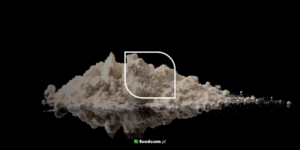Zusammenfassung
Inhaltsübersicht
Easter is just around the corner! You can certainly feel it from April’s butter prices. What are the post-holiday predictions?
Powders
We hear that at least two large western European producers are about 5 to 6 weeks behind with SMP production against the annual plan. Even if the springflash comes (although it is not at all certain that it will, because last week in Brittany it was -2 degrees and snowing) the producers will make up for a maximum of 2 weeks out of 6. As with butter, most of the demand for SMP is directed to the spot market. Prices are likely to remain high and buyers have no hedge for future positions.
The only FCMP that was available for purchase was from Ireland, and now it is no longer available. Demand remains stable and high. Products are likely to be seasonal, with manufacturers stocking up for summer. Additionally, as long as lactose remains in high demand around the world and the US cannot solve its transportation problems, we are likely to see a very strong European lactose market.
As protein consumption remains at very high levels, there is no sign of a reduction in demand for SWP, causing many buyers to seek out the limited quantities that are still on the market. This creates an opportunity for sellers to demand higher prices and slows futures trading, leaving most of the action in the spot markets.
Cheese
Mozzarella is offered higher than gouda. The price of mozzarella usually does not exceed the price of gouda, and it should be mentioned that we are still before the season for producing cagliata and mozzarella.
Butter
We are hearing that some butter manufacturers are delaying orders to retail consumers because of disruptions in production. If you are willing to pay the right price, the butter can always be found, but AMF not quite.
Liquids
In Poland, cream has reached 8900 EUR/MT, which translates into butter prices around 7300 – 7350 EUR/MT. The EU is still lagging behind last year with milk collection. Cream prices in some places have reached 9000 EUR/MT. SMC prices have again risen to 3700-3800 EUR/MT levels and its availability is low. Liquids prices have been on the upswing for the last 2 weeks, probably due to the holiday production before Easter.
Kategorien







